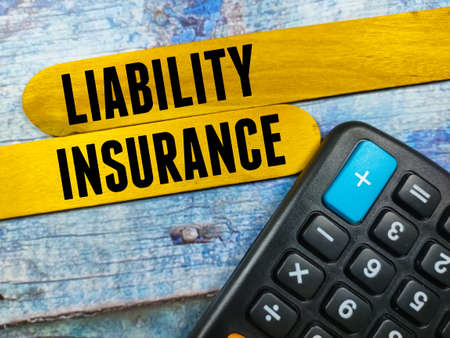Understanding Disability and Its Prevalence in the U.S.
What Qualifies as a Disability?
In the United States, a disability is generally defined as a physical or mental condition that limits a person’s ability to work or perform everyday activities. This can include both short-term and long-term conditions such as injuries, chronic illnesses, or mental health disorders. The Social Security Administration (SSA) considers someone disabled if they are unable to engage in substantial gainful activity due to a medically determinable physical or mental impairment that has lasted, or is expected to last, at least 12 months or result in death.
Types of Disabilities
| Type of Disability | Examples |
|---|---|
| Physical Disabilities | Back injuries, arthritis, heart disease, cancer |
| Mental Health Disabilities | Depression, anxiety, PTSD, bipolar disorder |
| Sensory Disabilities | Vision impairment, hearing loss |
| Chronic Illnesses | Diabetes, multiple sclerosis, autoimmune diseases |
Statistics About Disability in the U.S.
Disability is more common than many people realize. According to the Centers for Disease Control and Prevention (CDC), about 1 in 4 adults in the U.S.—that’s 61 million Americans—live with some type of disability. These disabilities impact daily life and employment opportunities. Here’s a quick look at disability statistics:
| Statistic | Data (U.S.) |
|---|---|
| Total adults living with disability | 61 million (26% of U.S. adults) |
| Adults with mobility issues | 13.7% (difficulty walking or climbing stairs) |
| Adults with cognitive disabilities | 10.8% |
| Working-age adults who experience disability before retirement age (according to Social Security Administration) | 25% (1 in 4 workers age 20 will become disabled before reaching retirement) |
The Likelihood of Experiencing a Disabling Event During Your Working Years
If you’re working and earning an income, it’s important to know your risk. Statistics show that about one in four 20-year-olds today will become disabled before they retire. Most disabilities are caused by illnesses—not accidents—and many happen unexpectedly. Being unable to work for several months or longer can create serious financial challenges if you don’t have a safety net like disability insurance.
2. The Hidden Costs: Financial Consequences of a Disability
Most people don’t realize how much a disability can impact their finances until it happens. Beyond the obvious medical bills, there are several hidden costs that can quickly add up and put stress on your financial well-being. Understanding these short- and long-term impacts helps highlight why disability insurance is such an important part of any financial plan in the U.S.
Short-Term Financial Impacts
When a disability strikes, the most immediate effect is often lost income. If you’re unable to work, even for a few weeks or months, paychecks stop coming in—while bills keep piling up. At the same time, you may face new expenses related to your condition.
Common Short-Term Costs:
- Lost Wages: Paychecks may decrease or disappear if you can’t work.
- Medical Bills: Doctor visits, tests, medications, and possible hospital stays.
- Rehabilitation: Physical therapy or occupational therapy sessions.
- Transportation: Costs for getting to and from medical appointments.
Long-Term Financial Impacts
If your disability lasts longer than a few months, the financial consequences can multiply. Many families find themselves dipping into savings or retirement accounts just to stay afloat.
Major Long-Term Costs:
- Continued Lost Income: Loss of earning power over years or decades.
- Home Modifications: Installing ramps, stair lifts, or making bathrooms accessible.
- Ongoing Medical Care: Chronic treatments, equipment (like wheelchairs), and support services.
- Caregiver Expenses: Paying for in-home care or assisted living if needed.
- Impacts on Retirement Savings: Using retirement funds early reduces what you’ll have later on.
The Real Numbers: How Costs Add Up
| Type of Expense | Estimated Monthly Cost (USD) | Description |
|---|---|---|
| Lost Wages | $3,000–$7,000+ | No paycheck from missing work |
| Medical Bills | $500–$2,000+ | Treatments, medications, doctor visits |
| Rehabilitation/Therapy | $200–$1,000+ | Physical/occupational therapy sessions |
| Home Modifications | $100–$500 (ongoing); $5,000–$25,000 (one-time) | Makes home accessible for disability needs |
| Caregiver Support | $1,000–$4,000+ | Pays for professional or in-home care help |
This table shows just how quickly expenses can add up. Even with health insurance, many of these costs aren’t fully covered—and without a steady income, it’s easy to see why so many Americans struggle financially after a serious illness or injury.

3. How Disability Insurance Works
Understanding the Basics of Disability Insurance
Disability insurance is designed to replace a portion of your income if you become unable to work due to illness or injury. This type of coverage is especially important in the U.S., where most people rely on their paycheck to cover everyday expenses, mortgage payments, and savings goals. Without it, a disability could quickly turn into a financial crisis for you and your family.
Short-Term vs. Long-Term Disability Insurance
There are two main types of disability insurance: short-term and long-term. Each serves a different purpose and covers different periods of time.
| Short-Term Disability | Long-Term Disability | |
|---|---|---|
| Coverage Duration | Typically 3-6 months | From 2 years up to retirement age (65+) |
| Waiting Period (Elimination Period) | Usually 0-14 days after a disabling event | Commonly 90 days or more after a disabling event |
| Benefit Percentage | About 60%-70% of your pre-disability income | About 50%-70% of your pre-disability income |
| Cost | Tends to be less expensive but only covers short periods | More costly but offers much longer protection |
Key Features of Disability Insurance Policies
Waiting Periods (Elimination Periods)
This is the amount of time you have to wait after becoming disabled before your benefits kick in. For short-term policies, this can be as little as a few days, while long-term policies often require waiting periods of several months. The longer the waiting period you choose, the lower your premium will typically be.
Benefit Periods
The benefit period is how long you will receive payments once you qualify for benefits. Short-term policies might pay out for just a few months, while long-term policies can provide coverage for several years or even until you reach retirement age.
Common Policy Features to Look For
- Own Occupation Coverage: Pays benefits if you cant work in your specific job, not just any job.
- Partial Disability Benefits: Offers support if you can work part-time or at reduced capacity due to your disability.
- Non-Cancelable and Guaranteed Renewable: Ensures the insurer cant cancel your policy or raise your premiums as long as you keep up with payments.
- Cost-of-Living Adjustments (COLA): Adjusts your benefits over time to keep up with inflation.
- Waiver of Premium: Lets you skip premium payments while youre receiving disability benefits.
The Takeaway on How Disability Insurance Works
If you rely on your income to meet your financial obligations, understanding how disability insurance works—and choosing the right type and features—is an essential step in protecting yourself from the unexpected financial impact of a serious illness or injury.
4. Why Traditional Health Insurance and Emergency Funds Aren’t Enough
Many people believe that if they have health insurance and a decent emergency fund, they’re fully protected against the financial risks of a disability. Unfortunately, that’s not always true. Let’s break down why these safety nets might leave big gaps when it comes to protecting your finances after a disabling illness or injury.
Health Insurance: Covers Medical Bills, Not Lost Income
Health insurance is essential, but it only pays for medical expenses like doctor visits, hospital stays, surgeries, and prescriptions. It does not replace your paycheck if you can’t work. So, even with great coverage, you could still face serious money problems if you’re unable to earn an income for weeks, months, or even longer.
What Health Insurance Covers vs. What Disability Insurance Covers
| Type of Coverage | What It Pays For | What’s Missing? |
|---|---|---|
| Health Insurance | Medical bills (doctor visits, hospital care, prescriptions) | No replacement for lost income |
| Disability Insurance | A portion of your lost income while you’re unable to work | Does not pay medical bills directly |
Emergency Funds: Helpful but Often Not Enough
An emergency fund is a smart financial move. Most experts suggest saving three to six months’ worth of living expenses. But what happens if your disability lasts longer than that? According to the Social Security Administration, one in four 20-year-olds will become disabled before reaching retirement age — and many disabilities last much longer than just a few months.
Example Scenario:
- Your emergency fund: $15,000 (covers about 4 months of expenses)
- Your disability lasts: 1 year or more
- After 4 months: Savings are gone, but bills keep coming — mortgage/rent, groceries, utilities, car payments, and more.
The Hidden Costs of Disability
A disability doesn’t just take away your paycheck — it can also add new costs like home modifications, physical therapy, or hiring help for daily activities. Health insurance may cover some rehab or equipment costs, but it won’t help you pay for everyday living expenses.
The Bottom Line: Don’t Leave Your Finances Exposed
If you rely only on health insurance and emergency savings to get through a disability, you could quickly find yourself in financial trouble. Disability insurance is designed specifically to fill this gap by providing ongoing income when you can’t work due to illness or injury. That’s why it should be a core part of every solid financial plan.
5. Integrating Disability Insurance into Your Financial Plan
Understanding Your Coverage Needs
Before adding disability insurance to your financial plan, it’s important to know how much coverage you actually need. Start by looking at your monthly expenses—think mortgage or rent, utilities, groceries, transportation, and any debts. Then, consider your current savings and any other sources of income you might have if you were unable to work due to a disability.
Monthly Expenses vs. Income Table
| Monthly Expense | Amount ($) |
|---|---|
| Housing (Rent/Mortgage) | 2,000 |
| Utilities & Bills | 300 |
| Groceries | 600 |
| Transportation | 250 |
| Debt Payments (Loans/Credit Cards) | 400 |
| Total Needed Monthly | 3,550 |
This table gives you a starting point for the minimum monthly benefit you should look for in a disability insurance policy.
Comparing Disability Insurance Policies
Not all policies are created equal. Here’s what to compare when shopping for coverage:
- Benefit Amount: How much will you receive each month if you’re unable to work?
- Waiting Period: How long do you have to wait after becoming disabled before benefits begin?
- Benefit Period: For how long will the policy pay out? (e.g., 2 years, 5 years, until retirement age)
- Definition of Disability: Does the policy cover “own occupation” (your specific job) or “any occupation” (any job you could do)? “Own occupation” is generally more comprehensive.
- Add-Ons or Riders: Are there extra options like cost-of-living adjustments or partial disability benefits?
- Premiums: What will it cost? Is the premium fixed or can it increase over time?
Policy Comparison Example Table
| Policy A | Policy B | Policy C | |
|---|---|---|---|
| Benefit Amount/mo. | $3,500 | $4,000 | $3,200 |
| Waiting Period | 90 days | 60 days | 120 days |
| Benefit Period | Till age 65 | 5 years | Till age 67 |
| “Own Occupation” | Yes | No | Yes (first 2 yrs) |
| Add-Ons/Riders Available? | No | Yes (COLA) | No |
| Monthly Premium ($) | $120 | $150 | $110 |
Making Disability Insurance a Core Piece of Your Safety Net
If you already have employer-provided disability insurance, check how much coverage it offers and whether its enough to meet your needs. Many workplace policies only replace a portion of your income and may not be portable if you change jobs. Consider supplementing with an individual policy for more comprehensive protection.
Your financial plan should protect against the unexpected—just like having car or health insurance. Disability insurance helps ensure that an illness or injury doesnt derail your long-term goals or force tough choices about paying bills. Review your coverage regularly as your financial situation changes, especially after life events like marriage, buying a home, or having children.
Your Next Steps Checklist:
- Add up essential monthly expenses.
- Total current savings and other income sources.
- Check existing coverage through work or other policies.
- Compare individual policy options using the features above.
- Select coverage that fits both your budget and your real-life needs.
- Sit down with a licensed insurance professional if you have questions—they can help tailor a solution just for you.
A little planning today can make all the difference tomorrow if the unexpected happens. With disability insurance as part of your financial plan, youre taking a smart step toward protecting yourself and those who count on you most.


